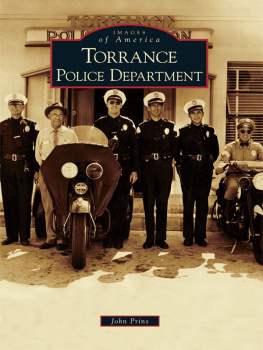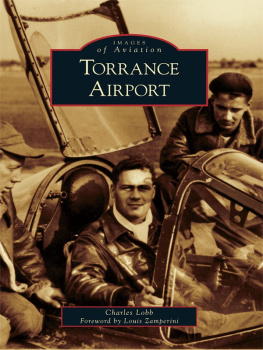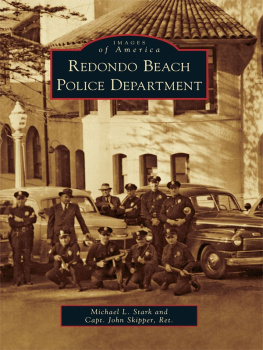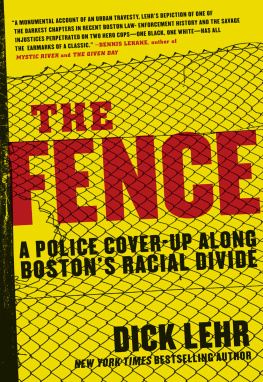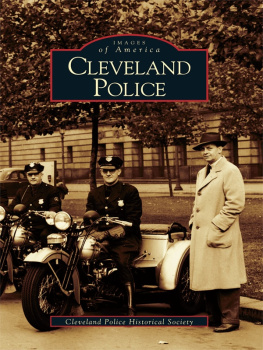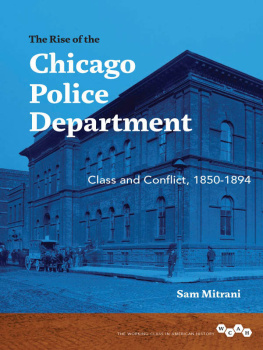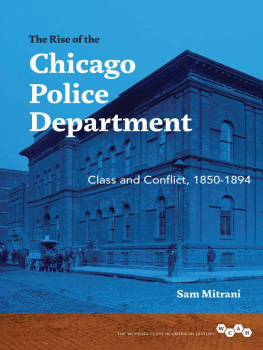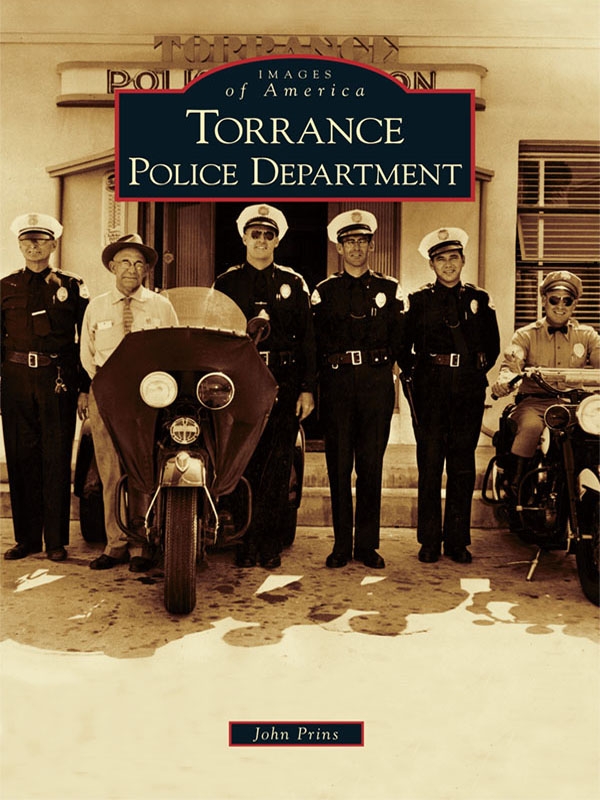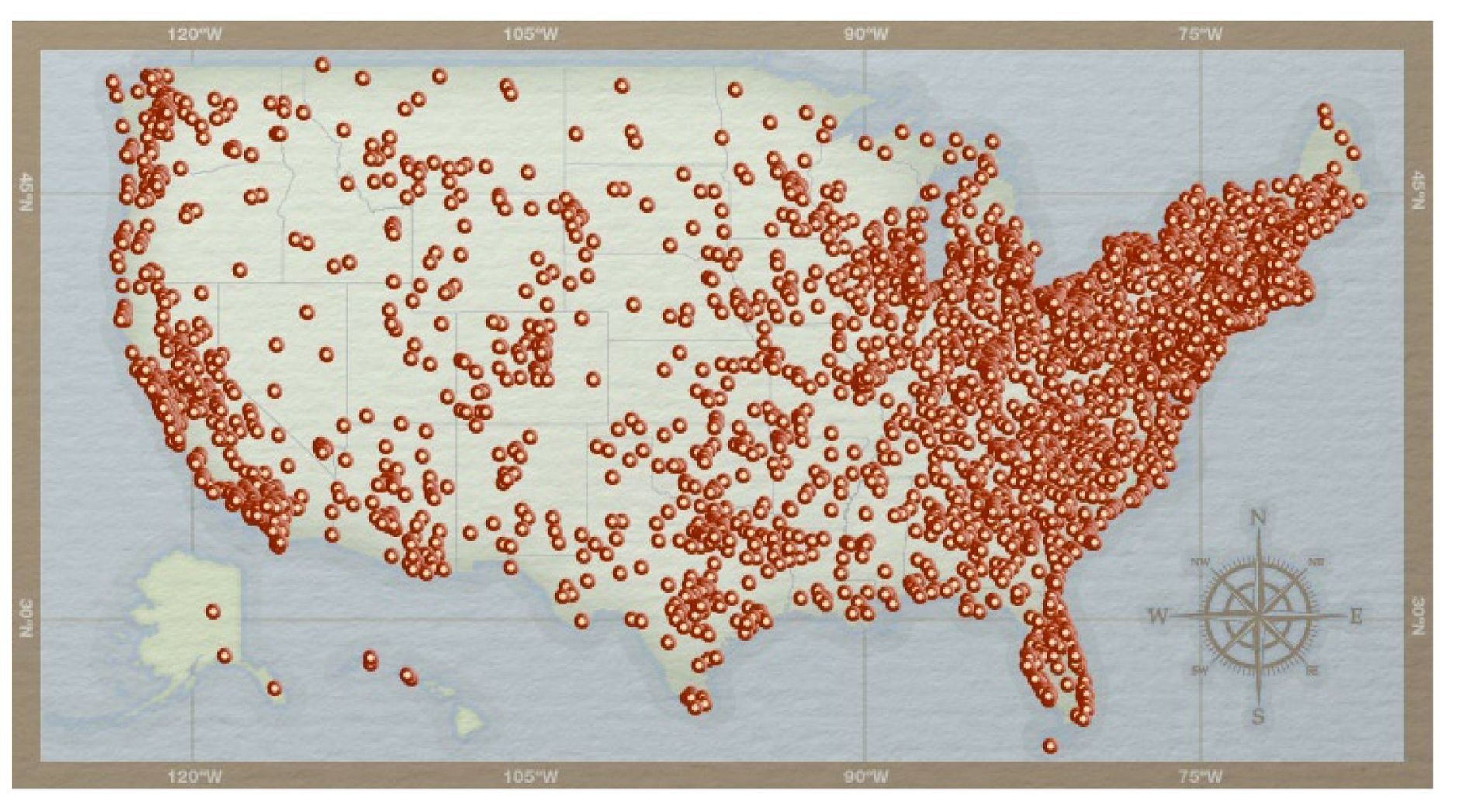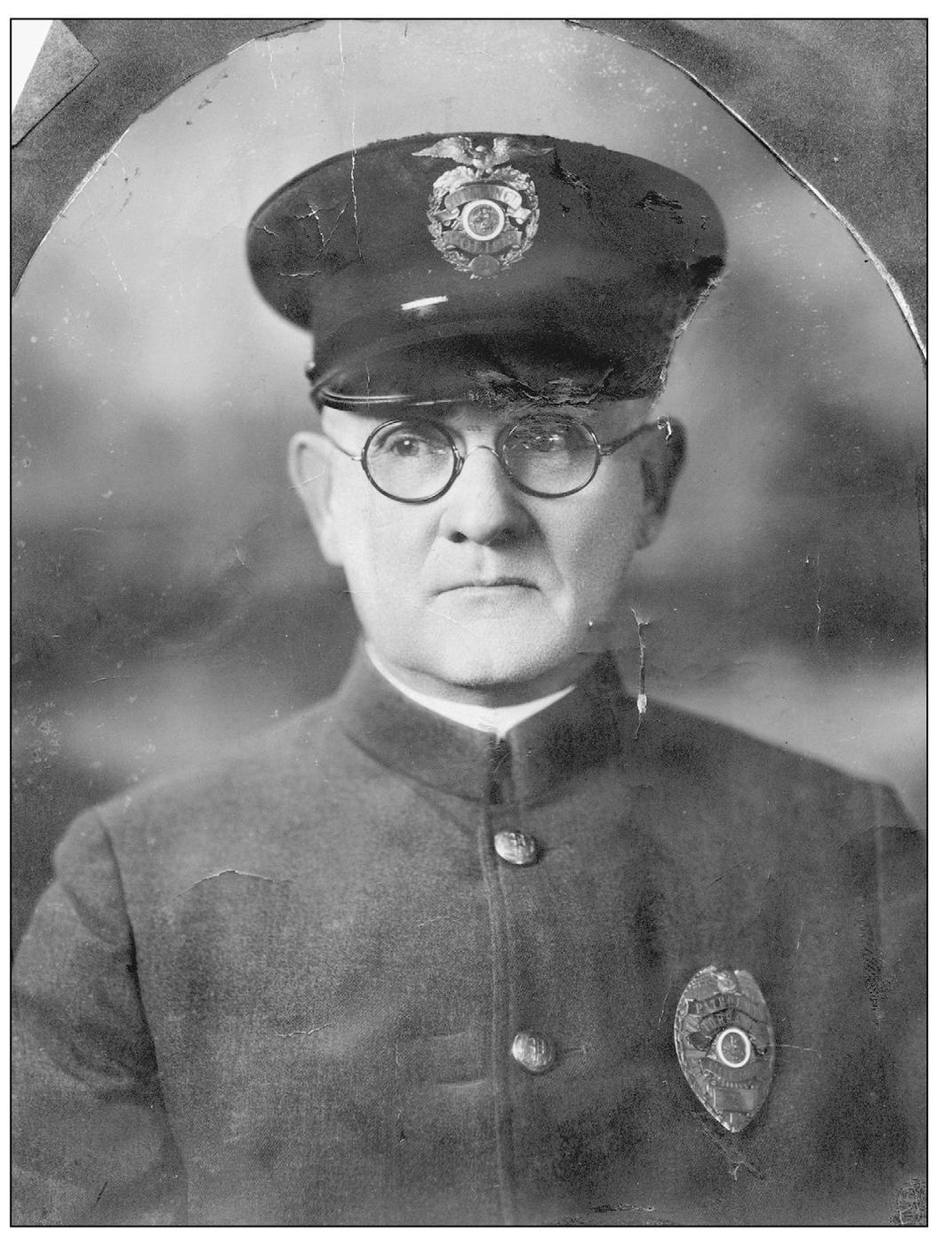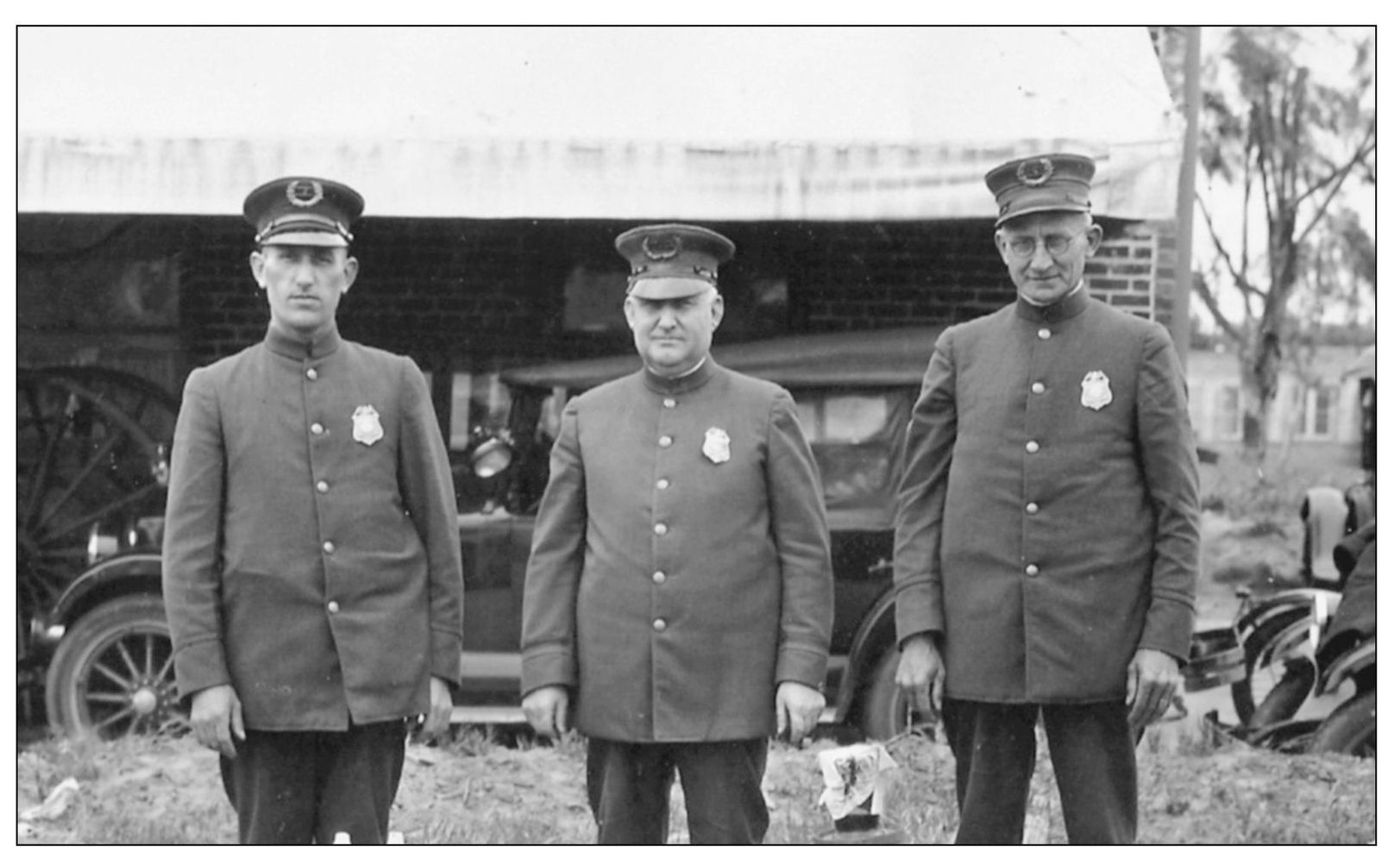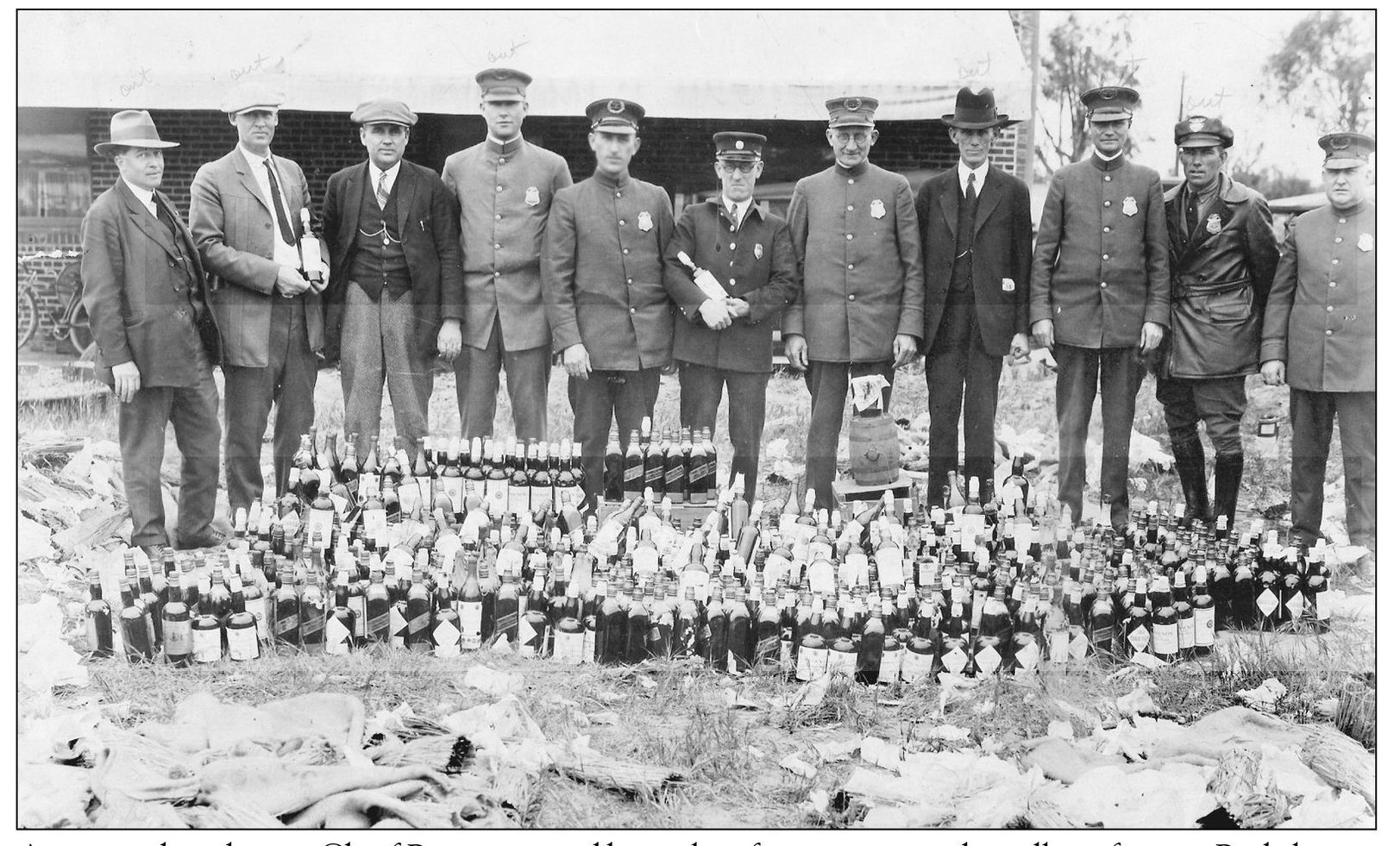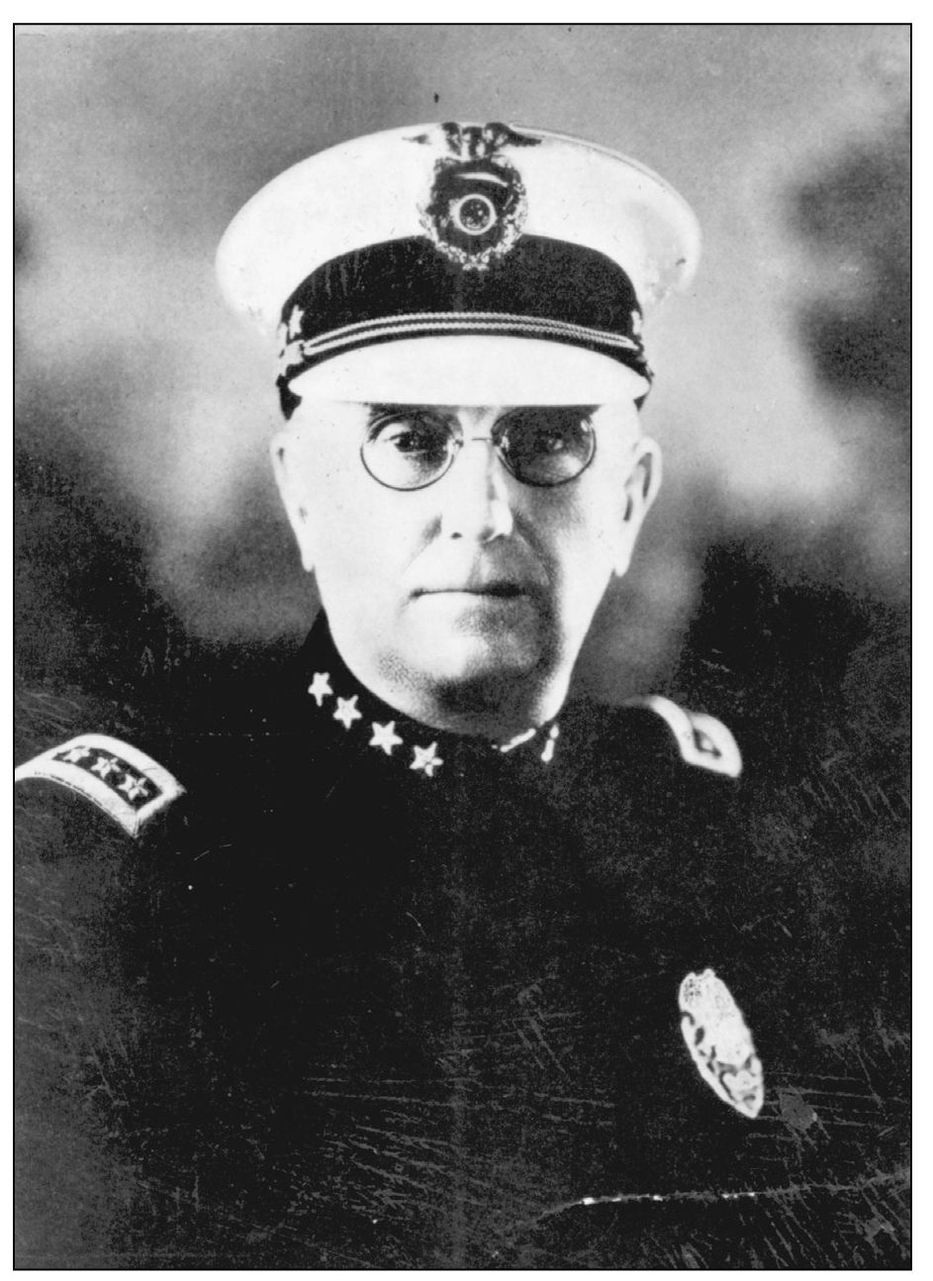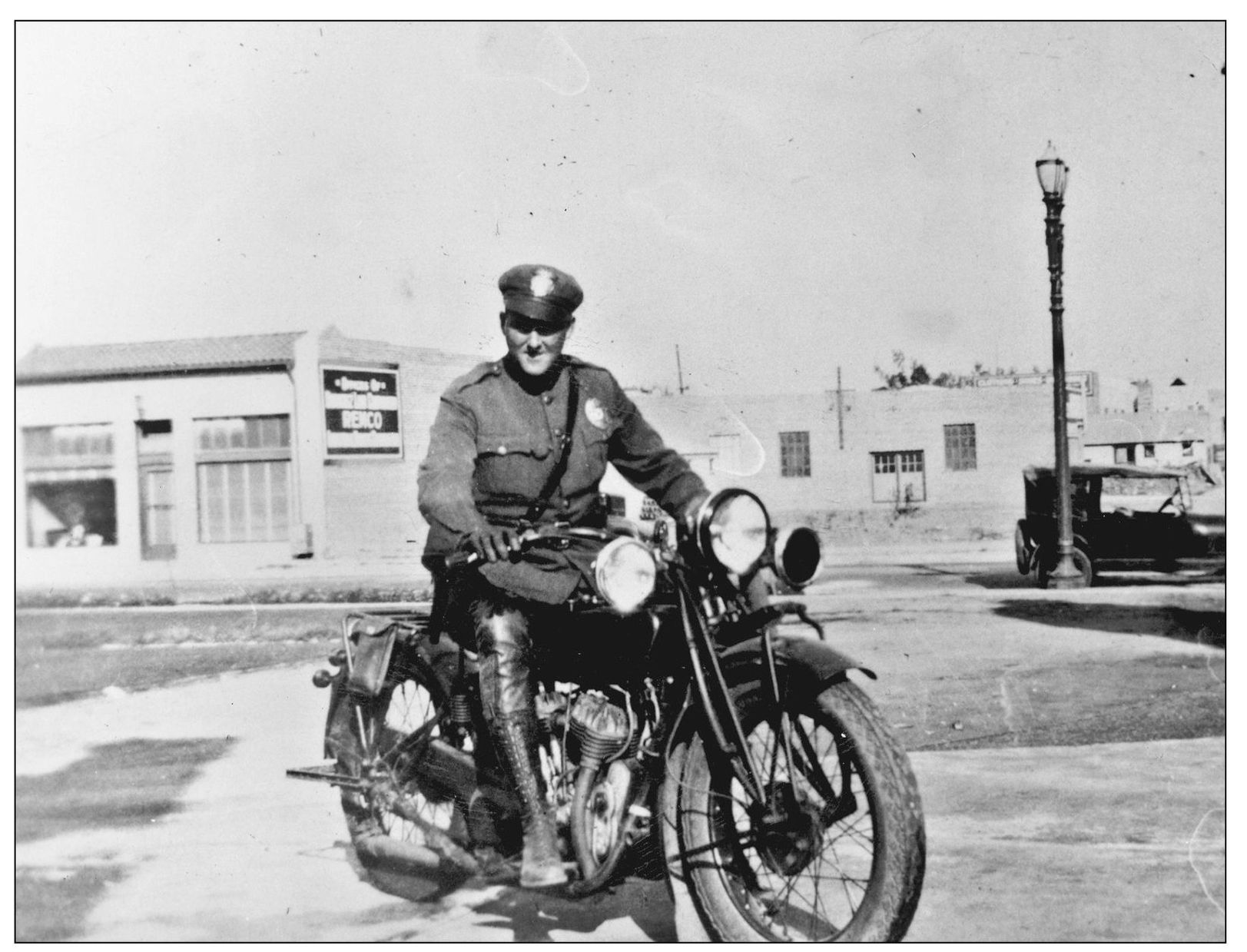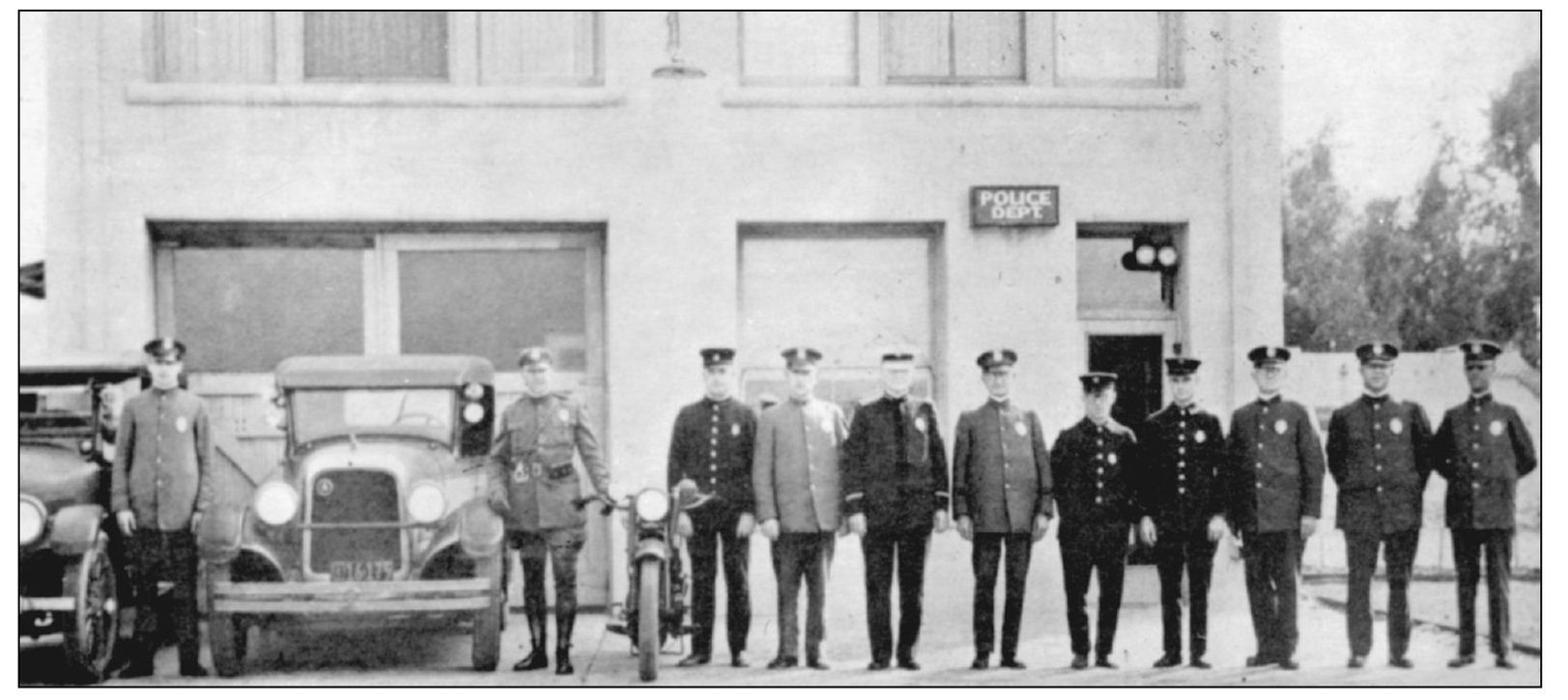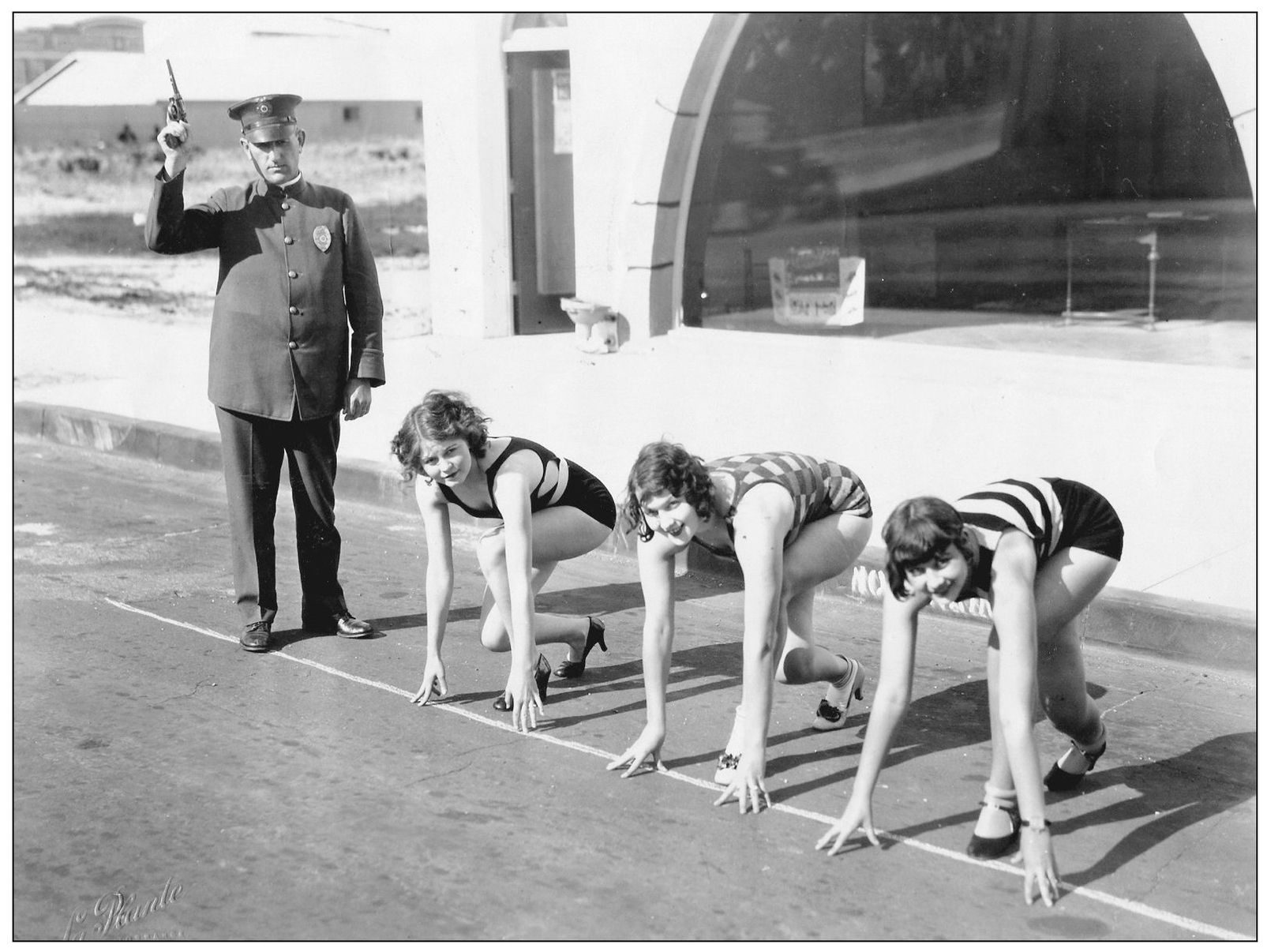ACKNOWLEDGMENTS
I set out with this book to illustrate 86 years of history of one of the finest law enforcement agencies around. My goal was to depict the diversity, professionalism, and teamwork for which the Torrance Police Department (TPD) is known. The information in this book has come from several sources: logbooks, newspaper articles, scrapbook clippings, and personal accounts. I owe a great debt of gratitude to the following people. Without their assistance, this book would not have been possible.
I would like to thank, first and foremost, retired TPD lieutenant Dave Cook for his tireless assistance in filling in the gaps and identifying faces in photographs. Dave unfortunately passed away on July 30, 2007, before this book was published. Rest in peace, sir! Retired captain Jim Weyant, the unofficial historian of the department, provided invaluable past research into TPDs history. Former TPD patrolman Jay Stroh, a true gentleman, supplied priceless photographs of and information on his father, Chief John Stroh. Retired lieutenants Wally Murker, Paul Nowatka, and Charlie Oates and retired sergeants Mel Bennett and Ray Ouellette provided cooperation and assistance. A special thanks goes to Aggie Barnett, wife of former TPD patrolman Willard Barney Barnett, and to Jack Johnson, son of former TPD lieutenant Swayne Johnson, for the historical photographs. Sam Gnerre, chief librarian of the Daily Breeze , and the management of the newspaper allowed me to use certain historical photographs.
The following current and retired Torrance Police Department personnel donated numerous images, not all of which could be included because of space constraints: Marsha Barnet, Leonard Beal, Bob Bowman, Kathy Diaz, Myriam Dowdy, Craig Durling, Jack and Maxine Hahn, Dave Hancock, Bob Kammerer, Penny Koenig, Kevin Kreager, Gary Lacroix, Dave Marsden, Jason McDonald, Dan Murray, Dexter Nelms, Jim Randall, Larry Robinson, Greg Satterfield, Charlene Spradlin (wife of Sprad), Bob Such, Mary Temple, and Carol Wright.
Chief Jim Herren and Chief John Neu and their command staffs gave me the go-ahead and allowed me to work on this project.
Thanks to Jerry Roberts, my editor from Arcadia Publishing, for his professional assistance.
Finally, my wife, Maria, allowed me to sacrifice many hours in order to complete this book.
Find more books like this at
www.imagesofamerica.com
Search for your hometown history, your old
stomping grounds, and even your favorite sports team.
One
THE EARLY YEARS 19211930
Ben Olsen, seen in this 1929 image, made a salary of $150 a month. The city later purchased him a badge and handcuffs at a total cost of $12.50. A concrete garage near the firehouse on the north side of Carson Street between Andreo and Cabrillo Avenues was rented for $2.50 a month, made habitable, and served as the first city jail for approximately two years.
On November 10, 1924, Loren F. Patterson, an investigator with the Los Angeles County District Attorneys Office, was appointed chief of the department and served in that capacity until May 1926. This image shows three of his men: Patrolman John Stroh (left), Patrolman Shorty Hamilton (center) and Sgt. J. B. Edwards. The early uniforms were green with brass P buttons.
Among other things, Chief Patterson and his police force continued rigidly enforcing Prohibition laws. This image from 1925 depicts the result of such a raid. From left to right are an unidentified Los Angeles County deputy sheriff, Patrolman William Phillips, Deputy Sheriff Charlie Taber, Patrolman Ira Young, Patrolman John Stroh, Desk Sergeant/Fireman Allen Ollie Stevenson, Sgt. J. B. Edwards, Chief Loren Patterson, Patrolman J. Brundrett, motorcycle officer Lester Stanley, and Patrolman Shorty Hamilton.
On May 5, 1926, Gerald M. Calder was unanimously appointed chief of police by the city of Torrance board of trustees, although he never aspired to it. Calder, who was known by thousands of his townspeople as Jerry, was a successful businessman at the time of his appointment, having established an automobile repair shop in Torrance. He grew up in Reno, Nevada, and after running the gauntlet in a miners life there, arrived in Torrance in April 1924. The eagle-topped badge had been introduced by this time.
In 1926, an adjacent site at 1523 Cravens Avenue was purchased, and a new two-story building was erected to house the fire department on the ground floor, with city hall occupying the second floor. The police department remained at the 1521 Cravens location and took over the entire building. This image shows the fire department/city hall in the front and the police department to the far right.
Motorcycle officer William Bill Malin was appointed by the Torrance Police Department in 1928 and became the third motorcycle officer in TPDs history (after Lester Stanley and Stanley Abbott). The war against speedsters soon became his primary responsibility. He is seen on his 1929 Indian Chief motorcycle in front of the police station on Cravens Avenue.
By 1929, the department had grown to 11 members. Seen from left to right are Patrolman A. L. Stuart, motorcycle officer William Bill Malin, Desk Sergeant/Fireman L. Paxton, Day Sergeant John Stroh, Chief Gerald Jerry Calder, Night Sergeant J. B. Edwards, Desk Sergeant/Fireman Allen Ollie Stevenson, Desk Sergeant/Fireman Jake J. J. Benner, Patrolman Ben Olsen, Patrolman Frank Schumacher, and Patrolman George Dolton. The patrol vehicles are 1927 (left) and 1924 (right) Studebakers. The firemen pulled double duty.
Two
THE GREAT DEPRESSION YEARS 19301940
During the Great Depression, one of the annual events held in the city was a small-town tradition called the Factory Frolic. It was the sort of social event only a small town with great pride in its large factories would organize. Patrolman John Stroh is seen here in 1930 about to give the start shot to three of Torrances beauties in a race at the event. One has to wonder how far they would get on those shoes.

